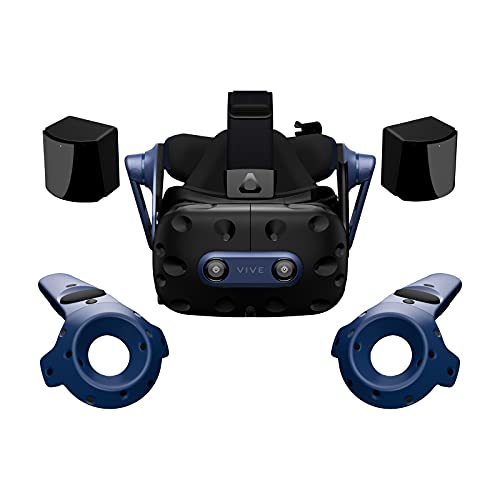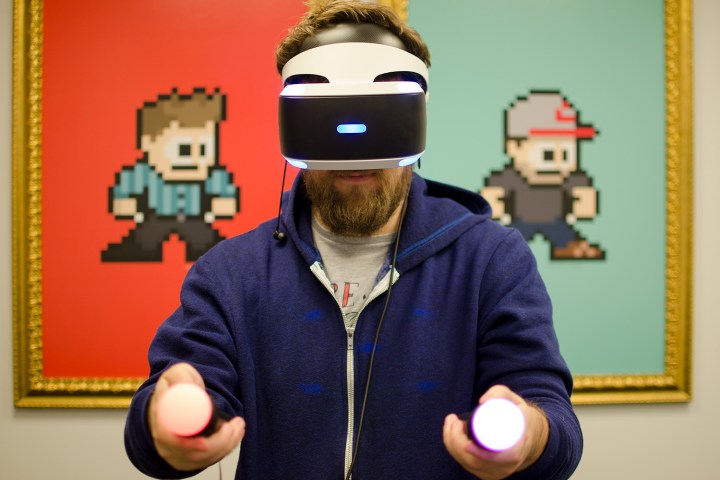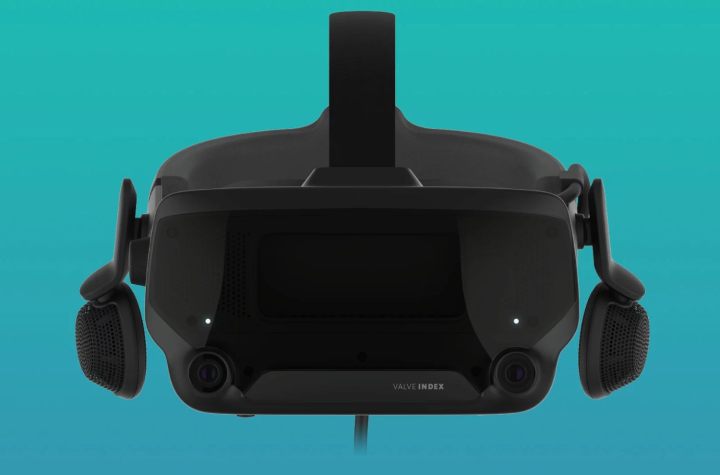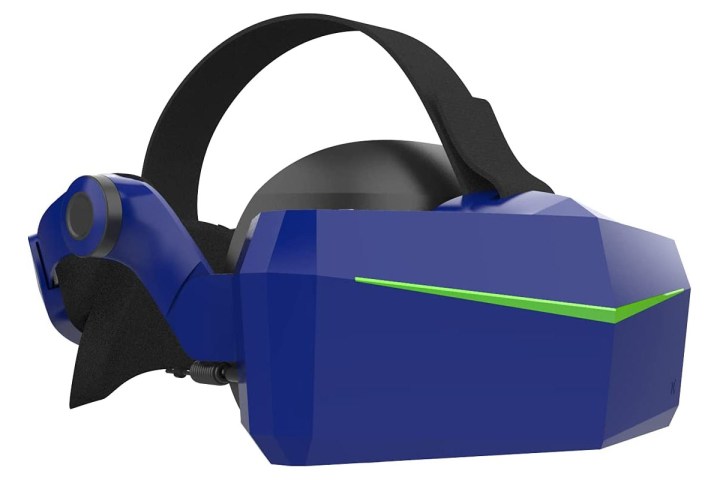The best VR headsets | Pro Well Tech
Virtual reality finally seems to be reaching a time when everyone should be taking a closer look, and the best VR headsets are the best way to do it. The number of intriguing games is skyrocketing, and there are plenty of great VR headsets to choose from. The challenge is finding the system that’s right for you.
Prices range from a very affordable $300 add-on and a $400 all-in-one system to a $1,400 VR headset that requires a powerful gaming PC. There are plenty of titles available for every VR system mentioned below, so the only considerations are how big your budget is and what type of hardware you already own.

Meta Quest 2
Best VR headset overall
Pros
Incredibly low price
Wireless and standalone design
120Hz
1832 x 1920 pixels per eye
Air Link to Windows PC
Cons
Mobile processor
100-degree FOV
Meta’s Quest 2 is a phenomenal value buy even with the recent $100 price increase. Right out of the box, you get inside-out tracking in a standalone device, with no need to set up base stations or be tethered to a computer. The display resolution and refresh rate are in line with most VR headsets. Other manufacturers simply can’t compete with Meta Quest 2’s quality and features at such a low price.
Meta’s Quest 2 isn’t simply the budget choice, however. With innovative features like built-in hand tracking that lets you operate the system without controllers, Air Link to wirelessly connect to a PC running SteamVR, and syncing a physical keyboard for use within VR, Meta is on the cutting edge of virtual reality even though the Quest 2 launched in 2020.
Meta’s next-generation headset, currently called Project Cambria, is coming soon, but executives from the company have stated as recently as December of 2021 that the Quest 2 will have a long life. That means the Meta Quest 2 is the overall best VR headset available right now and also the least expensive.

Meta Quest 2
Best VR headset overall

HTC Vive Pro 2
Best high-end option
Pros
Crisp 2448 x 2448 pixels per eye
120-degree FOV
120Hz
Plenty of accessories
HTC has a long history of making VR headsets, and the company’s latest model represents the best balance of high-end features and expansion options. The Vive Pro 2’s 2448 x 2448 pixel resolution is the highest available in a VR headset with a 120Hz rate.
As a SteamVR solution, you will need a Windows PC or a gaming laptop with a powerful graphics card to get the best results. HTC also makes standalone VR headsets but with compromises and costs that put them out of the running when compared to Meta’s Quest 2.
Optional accessories for HTC’s powerful and versatile Vive Pro 2 include a face tracker, body trackers, and a wireless adapter. The Vive Pro 2 can be made into a leading wireless system that can place your whole body in VR along with facial expressions. You can add any or all of these accessories to enhance the VR experience.
The HTC Vive Pro 2 didn’t win a spot on this list of best VR headsets without a challenge. On the downside, it is a heavy headset, but its head strap is among the best. It can run a bit hot when playing intensive games for long periods, so it’s important to take breaks, as with any VR system. The HTC Vive Pro 2 is one of the newest, most expensive, and best VR headsets on the market.

HTC Vive Pro 2
Best high-end option

Julian Chokkattu/Pro Well Tech
Sony PlayStation VR
Best VR headset for consoles
Pros
Integrated stereo headphones
Streamlined cables
Adds HDR pass through
Slimmer build overall
Cons
No performance changes
Limited efficacy of camera and Move controllers
If you have a Sony PlayStation 4 or 5, the low-cost PSVR add-on is worth consideration. For $300, it delivers a unique take on virtual reality that can’t really be experienced on any other platform. A perfect example is the VR game creation app, Dreams, which lets you design your own worlds. Sony also has several exclusive games for PlayStation VR.
PlayStation VR requires a PS4 or PS5 gaming console, so it isn’t recommended unless you already own the console or intend to use it separately. If choosing a PSVR system solely for VR, your money is better spent on a system with better specifications.
Sony’s PSVR has been around since 2016, with a minor update in 2017, making it the oldest system on the list, and the low-resolution display wasn’t a glaring issue at that time. It’s still an interesting VR system, but Sony has announced that a new model is in progress.

Sony PlayStation VR
Best VR headset for consoles

Valve Index
Best for SteamVR
Pros
Fast 144Hz refresh rate
130-degree wide FOV
Made by SteamVR developer Valve
Great Knuckles controllers
Cons
1440 x 1600 pixels per eye
It should come as no surprise that the Valve Index is the top pick for the best headset for SteamVR since both are created by Valve. The Valve Index hits the sweet spot with a very solid design at a reasonable price for a PC-based VR system.
The display is sharp, with a wider-than-average 130-degree field of view and one of the best refresh rates at up to 144Hz. The Valve Index is on the heavy side, but it has a very comfortable head strap.
This product was launched in 2019, and rumors suggest that a new higher-resolution model is in development, but there have been no recent hints of a launch date. If you like the look of the Valve Index, now is a good time to order before the holiday season.

Valve Index
Best for SteamVR

Pimax
Pimax 5K Super
Alternate pick for SteamVR
Pros
Fast 180Hz refresh rate
Super-wide 200-degree FOV
Sharp 2560 x 1440 pixels per eye
Cons
Best refresh rate narrows FOV
Widest FOV slows refresh rate
Pimax also makes a super high-resolution VR system, Pimax 8K, which features 4K resolution sharpness for each eye. The reason the Pimax 5K Super won out is that it allows an ultra-fast refresh rate and an incredibly wide field of view. Quicker screen updates can be more important in fast-action VR than resolution, and the wider view increases peripheral vision, another boost for reaction time. The Pimax 8K resolution is also much more expensive.
You can adjust the refresh rate and field of view, and you have to choose which is most important. To achieve the highest refresh rate of 180Hz, the field of view is reduced to 150 degrees. This is still quite wide and a good choice for fast-action games. If you pick the widest field of view, 200 degrees, the maximum refresh rate drops to 120Hz.
If the Pimax 5K Super or Pimax 8K interest you, it might make sense to check out the Pimax Crystal, which is coming soon. This extremely expensive VR headset, priced at $1,900, brings the best of both models together. You can read more about the Pimax Crystal in our preview of its advanced technology.

Pimax 5K Super
Alternate pick for SteamVR

HP
HP Reverb G2
Best for Windows Mixed Reality
Pros
Low-cost
Lightweight
Sharp 2160 x 2160 pixels per eye
Cons
Limited to 90Hz refresh rate
114-degree FOV
Optics blur around the edges
HP is best known as a computer and printer manufacturer, but it’s also a solid choice for getting started with virtual reality. The Reverb G2 has a relatively low price, a high-resolution display, and a competitive field of view. It’s a great way to dip a toe into Windows Mixed Reality and is compatible with SteamVR.
The HP Reverb G2 does have some shortcomings. The display refresh rate is somewhat slow at 90Hz, and this could make fast movements become a little disorienting. While the central portion of the display is quite crisp, the edges are soft, so there are trade-offs at this low price.

HP Reverb G2
Best for Windows Mixed Reality
Frequently Asked Questions
What is FOV for VR headsets?
FOV stands for field of view and describes how much can be seen at once when you look through a VR headset. A narrow field of view is like looking through a tube with only darkness visible at the edges. Over 100 degrees has become fairly standard, and more is usually better. On the other hand, an ultrawide field of view reduces pixel density and makes the graphics less crisp.
What is refresh rate and why is it important?
The refresh rate of a VR headset’s display is very important. A high refresh rate means images shown in the headset change more frequently, matching the movements of your head with greater accuracy. This is important since any mismatch is disorienting and might lead to motion sickness.
Whenever the motion detected from your inner ear disagrees with what is seen visually, it causes a conflict that your nervous system struggles to resolve. Perhaps motion sickness evolved as a way to purge the digestive system of ingested toxins. In modern times, it can be quite inconvenient.
The VR headsets in our list are the best available right now, but virtual reality technology is advancing rapidly. Be sure to check back in the coming months for several big announcements that are expected by the end of the year. With Meta promising an exciting upgrade, Apple’s long-rumored headset expected soon, rumors of a Valve Index 2, and the ever-growing collection of headsets from HTC and Pimax, our expectations for a top-quality VR headset could be completely rewritten within months.
Editors’ Recommendations







